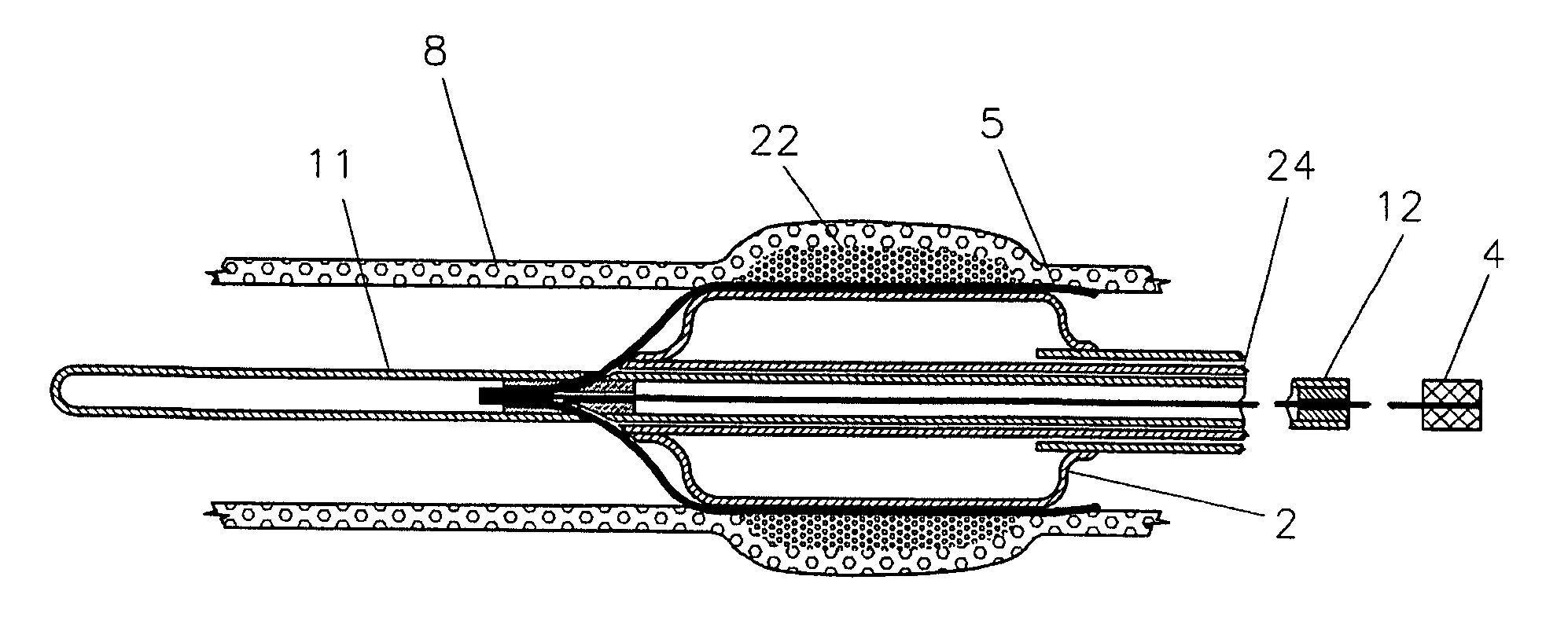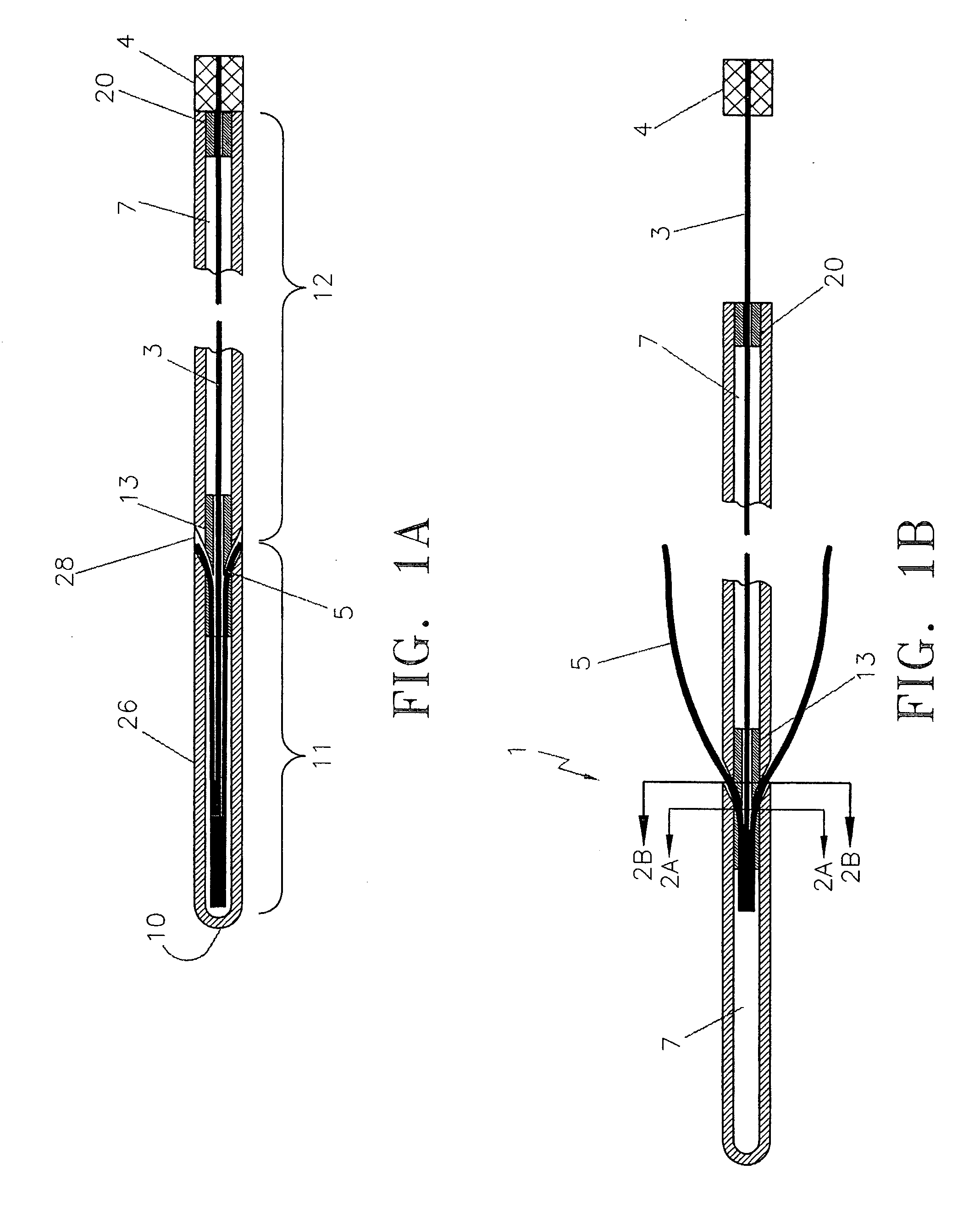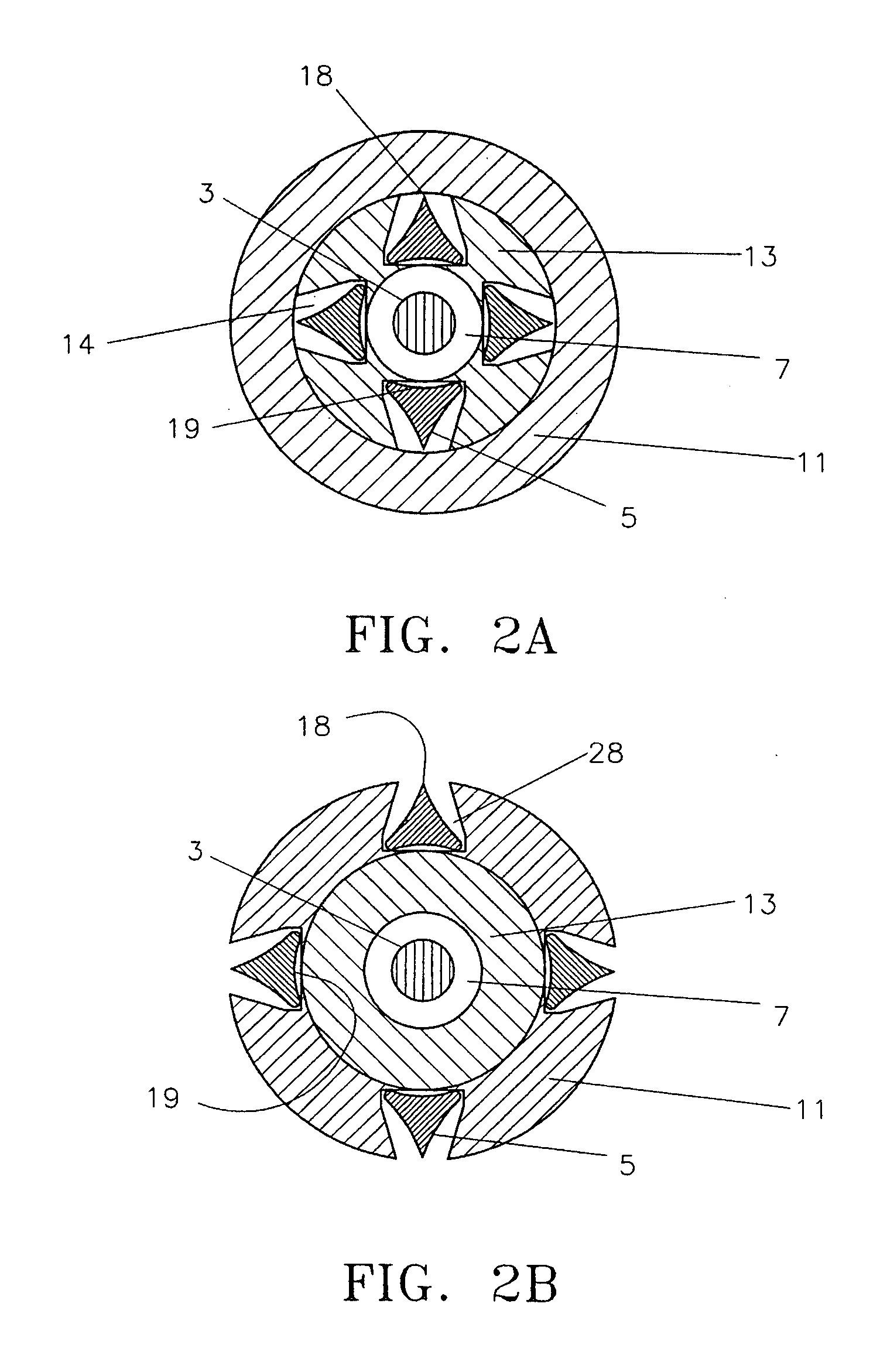Device and method for converting a balloon catheter into a cutting balloon catheter
a technology of cutting balloon and balloon catheter, which is applied in the field of intraluminal devices, can solve the problems of increasing the degree of vascular trauma, the catheter is not strong enough to sufficiently open such lesions, and the catheter is required to be larger
- Summary
- Abstract
- Description
- Claims
- Application Information
AI Technical Summary
Benefits of technology
Problems solved by technology
Method used
Image
Examples
Embodiment Construction
[0050] Referring to FIG. 1A, a conversion device 1 of the present invention is shown from a sectional view. Longitudinal housing 26 is preferably made from polyimide shaft tubing or other flexible material with sufficient pusbability to navigate tortuous vessel channels. The outer diameter of the tube 26 is dimensioned so as to allow insertion of the device 1 within the guidewire lumen of a standard angioplasty catheter 24 (see FIG. 8). Typically, coronary balloon catheters accept 0.014″-0.018″ diameter guidewires. Balloon catheters for peripheral vascular applications accept 0.035″ diameter guidewires. Because the conversion device 1 is delivered through the lumen of a standard angioplasty catheter, the problem with large profiles of prior art cutting balloons and the difficulty in insertion and advancement caused by the larger devices is completely eliminated.
[0051] The longitudinal housing such as a tube 26 is a continuous tube, defined by two tubular jacket segments with at lea...
PUM
 Login to View More
Login to View More Abstract
Description
Claims
Application Information
 Login to View More
Login to View More - R&D
- Intellectual Property
- Life Sciences
- Materials
- Tech Scout
- Unparalleled Data Quality
- Higher Quality Content
- 60% Fewer Hallucinations
Browse by: Latest US Patents, China's latest patents, Technical Efficacy Thesaurus, Application Domain, Technology Topic, Popular Technical Reports.
© 2025 PatSnap. All rights reserved.Legal|Privacy policy|Modern Slavery Act Transparency Statement|Sitemap|About US| Contact US: help@patsnap.com



